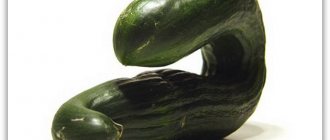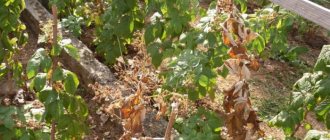Mold on potatoes, what to do
Start monitoring the safety of the crop while the tubers are still in the ground. Mow potato tops a week before digging up the vegetable. This way you will prevent the fungus from getting through the stem to the tuber.
Before storing potatoes, thoroughly treat them to remove mold. A lime solution is perfect for this. Add a little one percent copper sulfate to it.
The storage location (basement, cellar) is also disinfected. For this purpose, smoke of dried herbs is used. You can use tansy or wormwood.
If, after all, the potatoes are covered with mold, then use safe methods for removing the fungus from the place where the vegetable is stored:
- Treatment of the premises. This “procedure” is performed using a quartz or ultraviolet lamp. Leave it on indoors for at least five hours.
- Removing mold from the walls, floor and ceiling of a room using a lime solution. At the same time, make sure that not a single drop gets on the potatoes during processing.
- Getting rid of infected tubers. Go through and inspect all the potatoes. If we find an “infection”, we safely throw it away.
- Reduced humidity. Provide the potato storage area with good ventilation. Dampness is the causative agent of mold. In addition to equipping the room with ventilation, you can place a small container with the same lime (quicklime) on the floor. It absorbs moisture very well. Sprinkle the tubers themselves with aspen chips or wood ash.
How many days does it take for mold to appear on potatoes?
Four days are enough for pathogenic microflora to grow. Therefore, before storing potatoes, carefully sort them out and throw away infected tubers.
Is it possible to eat moldy potatoes?
A number of experts are confident that the vegetable can be consumed after first removing the top part from it. You need to remove at least a three-millimeter layer from the potatoes. In this case, you should not allow even a particle of fungus to get on the peeled part of the vegetable.
But not everyone agrees that contaminated potatoes can be eaten. There is a claim that the fungus penetrates inside the potatoes, and even heat treatment does not eliminate it.
And the harm of mold to humans has been scientifically proven: if it enters the body it causes allergies, poisoning and even cancer.
Start caring for potatoes in the garden. If you did not grow the potatoes yourself, but bought them, then make sure they are stored correctly.
To get a good potato harvest, you need to spend a lot of time and effort. But even during storage, there are unpleasant surprises - the tubers in the basement begin to mold and rot, as a result of which part of the stock has to be thrown away.
From potatoes, as well as from walls and ceilings, fungus can quickly spread to other products, and this shortens their shelf life. To get rid of mold in a potato cellar, you need to know what it looks like and what remedies are effective against it.
Fusarium dry rot
First, dull depressed spots of gray-brown color appear on the tubers. After some time, the skin at the site of the spots wrinkles, the flesh becomes dry, and voids with mycelium often form in the affected parts of the tuber.
The infection penetrates along with lumps of wet soil - which is why it is recommended to harvest the crop in dry weather.
How to deal with Fusarium dry rot?
|
What it is
Molds are various fungi that form mycelium with microscopic fruiting bodies. Their colonies penetrate the pulp of tubers and use it as a breeding ground. Under favorable conditions, they actively spread.
It is easy to understand that mold has settled on potatoes - this immediately affects the appearance of the affected tuber. A plaque forms with black, gray, white, green or brown spots. The color depends on the type of fungus and the stage of its development. Also in the cellar you can often observe mold, the structure of which resembles cotton wool.
Why do potatoes grow moldy in the cellar?
Here are the factors that contribute to the problem:
- poor operation of supply and exhaust ventilation or its complete absence - lack of fresh air contributes to the spread of fungal colonies;
- high humidity and high temperature;
- accumulation of condensation on the walls of the storage facility;
- poor waterproofing, as a result of which groundwater seeps into the cellar;
- use of wooden structures in storage that have already been contaminated with mold spores;
- storage of products affected by mold - spores from spoiled vegetables and fruits actively spread throughout the cellar, settling on the walls, floor, ceiling and other products;
- sending for storage unripe potatoes and varieties that cannot be stored for a long time.
Wet bacterial rot
The source of the disease is putrefactive bacteria that can turn beautiful tubers into gray porridge in a few months.
First, the affected areas of the tubers darken, become covered with brown mucus, and become very soft. Such potatoes have a sad end - they rot, emitting an unpleasant odor.
The disease actively develops when storage conditions are violated (high temperature, humidity and poor ventilation) and when damaged potatoes are stored for storage. It is through cracks and microtraumas that bacteria penetrate the tuber, slowly destroying it.
How to deal with wet bacterial rot?
|
How to prevent the problem before planting potatoes
Timely measures taken will help avoid mold growth. To do this, it is necessary to prepare the cellar and process the tubers even before storing the crop for storage.
Preparing the premises
It is recommended to treat the cellar on warm and sunny days. It consists of several stages:
- Clean the room - remove plant debris; Treat shelves, pallets and drawers with soapy water and take them outside to dry.
- After the boards have dried (about a week), treat them with an antifungal agent, for example, a strong solution of potassium permanganate.
- Only a dry cellar is suitable for storing potatoes, so they are thoroughly dried and left open. This will take from 5-7 days to several weeks, depending on the condition of the storage facility.
- When the room is dry, treat the walls with antifungal and antibacterial agents. You can whiten the surfaces with a solution of lime with the addition of copper sulfate: for 10 liters of water you will need 2 kg of lime, 1 kg of vitriol and 100-150 g of ordinary salt. It is advisable to whitewash twice at intervals of a week.
- Treat the earthen floor with a solution of copper sulfate and let the product absorb.
- After this, you can bring in racks and drawers. The cellar is ready to store the new harvest.
How to process potatoes
1.5-2 weeks before harvesting potatoes, you need to mow the tops and burn them. The crop is dug up in dry weather. After harvesting, the tubers are cleared of adhering clods of earth and allowed to dry under a canopy for 1-2 days, only then sent to the basement.
Only healthy tubers are suitable for storage. Rotten, damaged and pest-infested specimens are discarded. To prevent the occurrence of mold, the tubers are treated with special biological products (Alirin-B, Gamair).
Other measures
There are several other ways to prevent mold from occurring when storing potato stocks:
- pour a layer of sand or lime on the floor under the vegetables;
- add rowan leaves to the potatoes - they release phytoncides that destroy putrefactive organisms;
- you can add branches of wormwood, which has an antimicrobial effect;
- It is recommended to store potatoes next to beets - this vegetable will serve as a moisture regulator, which will reduce the risk of tubers rotting.
Other measures
There are several other ways to prevent mold from occurring when storing potato stocks:
- pour a layer of sand or lime on the floor under the vegetables;
- add rowan leaves to the potatoes - they release phytoncides that destroy putrefactive organisms;
- you can add branches of wormwood, which has an antimicrobial effect;
- It is recommended to store potatoes next to beets - this vegetable will serve as a moisture regulator, which will reduce the risk of tubers rotting.
What to do if potatoes are moldy
If mold does appear, combating it must begin immediately to prevent further spread.
On potatoes
If you notice that the tubers are covered with a white coating, get rid of them. These potatoes should not be eaten. Take a good look at the remaining tubers, especially those that were lying next to the affected specimens. It is better to put them aside separately.
Place a container of quicklime on the floor. This substance absorbs moisture well, which usually causes mold to develop.
If you have not found any visible signs of spoilage of the tubers, but there are Drosophila flies in the room, it is likely that the lower layers of the potatoes have begun to mold. If there is also an unpleasant odor in the cellar, it is recommended to sort out the crop.
In the basement
Before starting a war against mold, it is recommended, if possible, to remove the contents of the cellar and ventilate the room naturally. If the floor is dirt, remove the top layer of soil.
Wooden racks and boxes must be wiped with soapy water or other disinfectant and dried. Areas covered with mold are cleaned with a wire brush.
After this, start cleaning the room. You can use both chemical agents designed specifically to remove fungus and folk ones:
- Purchased preparations for combating mold: Dali antiseptic, Olimp stop mold, etc.
- Sulfur bombs - they are set on fire and left in the basement for 7-10 hours, closing all exits. Smoke kills mold fungi even in hard-to-reach corners of the cellar.
- Bleach is an affordable and popular substance for killing mold. Sodium hypochlorite in the product kills fungus and disinfects the surface.
- Ammonia - before use, it must be mixed with water in a 1:1 ratio. Do not use simultaneously with bleach, as the reaction produces toxic gases.
- Baking soda - dissolve a tablespoon of the product in a glass of water and wipe the surface with the resulting mixture.
- A solution of vinegar, boric acid, hydrogen peroxide and water in a ratio of 1:1:1:4. The composition is applied to the affected surface using a spray bottle, left for a few minutes, then wiped with a napkin.
- Lime - 10 liters of water will require 500 g of the substance. Add 200 g of formalin or 100 g of copper sulfate to the resulting solution. This composition is used to wipe the surface not only to combat existing mold, but also as a preventive measure.
Preventing a problem is much easier than fighting it. Therefore, do not forget every year, before storing the crop, to pay attention to preventive measures. If fungus appears, it is necessary to identify and eliminate the cause that caused this problem. Otherwise, all control methods will be temporary, and after some time the mold may appear again.
If you find an error, please select a piece of text and press Ctrl+Enter.
Mold in the cellar, similar to cotton wool, is very common. This is due to poor ventilation and high humidity. Many people have stopped paying attention to mold in the cellar. Harmful stains on the ceiling not only spoil the appearance, but can also cause significant damage to human health.
Features of mold control
Another important point is the location of the cellar. Different methods are suitable for combating mold in the cellar of a house and garage due to certain features.
In the garage cellar
The best option is lime whitewash. It is necessary to remove the mold with a scraper and then apply whitewash. It is also recommended to spread slaked lime on the shelves and floor so that the material absorbs fungal spores.
Garages often store fuels and lubricants, as well as metal parts, so it is not recommended to use the following products:
- hydrochloric acid;
- chlorine-containing preparations;
- burners and smoke bombs.
For more information on how to destroy white mold in the cellar, watch the video.
In the cellar of the house
First of all, you need to remove all food, as well as metal and wooden objects from the room. Then scrub the moldy areas with a wire brush. After this, treat the surface with citric or boric acid, ammonia, lime or bleach.
In the cellar for storing potatoes and other vegetables
Quite often, poorly dried potatoes and other vegetables are placed in the cellar, which leads to rapid spoilage of food and the appearance of mold. Therefore, it is necessary to check whether moisture remains on the vegetables.
You can also prevent mold by using the following traditional methods:
- place aspen chips in a bag of potatoes;
- place wormwood between the rows of potatoes;
- cover the potatoes with ash;
- cover the vegetables with rowan leaves.
If it was not possible to prevent the appearance of fungus, then you need to remove the vegetables from the basement and fumigate them with a sulfur bomb. In addition, you can place quicklime in the basement so that it attracts moisture.
In a wooden cellar
Household chemicals and folk methods help in the fight against mold in a wooden cellar. The exception is eliminating fungus using a gas burner, since the wood may ignite.
When purchasing ready-made products, you need to check whether they are suitable for processing wood.
Immediately before applying the compounds, you need to clean the surface as much as possible from mold and assess the damage. Quite often, wooden elements turn out to be completely damaged and need to be replaced, otherwise all the work will be in vain.
What is mold
Fungal colonies that develop from spores are called mold. Spores are constantly in the air, only under the influence of unfavorable factors (high humidity, heat) do they begin to “wake up” and actively reproduce. Molds can grow on concrete, paint, and wood. There are many types of mold, depending on which you can see spots that look like cotton wool in black, brown, green, and white. There are also luminous fungi, but they are not dangerous for the walls or ceiling of the cellar.
Mold can destroy building and finishing materials, sometimes it reaches the base. Therefore, those with mold in the cellar should think about getting rid of fungal colonies as soon as possible, otherwise they will have to make repairs or even rebuild. There are black, white and brown mold. The specific color depends not only on the type of fungus, but also on the stage of development, the color of the surface on which the uninvited “guest” has settled.
Reasons for appearance
Mold never appears just like that; this event is preceded by other unfavorable circumstances:
- missing or clogged ventilation shafts. Lack of fresh air contributes to the growth of fungal colonies;
- increased level of air humidity, condensation accumulation. This aspect often depends on the first factor;
- insufficient air circulation in the cellar;
- storage of rotten fruits and vegetables. Spoiled products become sources of mold, spores actively spread throughout the room, settling on the walls, floor and ceiling;
- the use of wooden products that are contaminated with fungal spores.
Late blight
A very dangerous fungal disease that can destroy about 60-70% of the entire crop.
It is not difficult to calculate: blurry gray, sometimes brown, hard spots appear on the tubers, going deep - if you cut a potato, they can be seen on the pulp.
The disease can develop during the growing season, as well as during harvesting: a fungal infection from the tops moves to the tubers and gradually destroys them. The development of the disease continues at the very beginning of storage at a sufficiently high air temperature in the cellar.
Fungal infection is not transmitted from tuber to tuber during storage.
How to deal with late blight?
|
Phytophthora actively develops at high temperatures of about 20-24°C. Therefore, it is not recommended to store the crop in a residential area - the disease will destroy it very quickly.
Favorable conditions for reproduction
Why does mold appear in some cellars and not in others? For the appearance of “life” certain conditions are necessary:
- presence of spores in the air. They are transported and settle in the cellar on people, products, animals;
- nutrient organic medium (paper, wood, soil, peat pots);
- favorable microclimate (high humidity, temperature about 20 degrees). Poorly functioning or non-functioning ventilation also has a negative impact.
Some types of fungus have the ability to reproduce at temperatures of 0 degrees.
Pay special attention to the ventilation system. After all, it is designed for normal air circulation in the room. Air movement prevents mold spores from attaching to any surface. In the corners, air movement is difficult; this is where colonies of fungi often accumulate.
Ventilation helps remove excess moisture from the room, which occurs against the background of high humidity outside or a large difference in temperature. If there are fungal spores on the walls, but there are no favorable conditions for reproduction, they will not germinate. Based on this, we can conclude that poor ventilation is the main reason for the appearance of fungal colonies in the cellar.
How to get rid of food moths in the kitchen? Check out our selection of effective pest control methods.
Read about how and how to remove mold from a wall in an apartment at this address.
How to prevent mold and build the perfect cellar
Mold on potatoes, the surface of the walls and ceiling of the basement are indicators of improper cellar equipment. In order for it to perform all the necessary functions and operate for a long time, during its construction the following recommendations should be followed:
- It is better that the cellar is located in a dry and elevated place;
- stone, concrete or brick should be used for the construction of walls and floors;
- the room must be equipped with a high-quality ventilation system;
- there must be proper air exchange in the cellar, preventing temperature changes and preventing the formation of condensation;
- Concrete mixture can be used for plastering walls.
At the stage of construction work, special attention should be paid to the waterproofing of the structure. It will prevent excess moisture from entering the cellar from the external environment. The external cracks of the basement are filled with concrete mixtures. A drainage and water disposal system is being constructed. Thus, the outbuilding is protected from the effects of groundwater. All these measures will allow you not to think every year about measures to destroy fungal formations and use the cellar for a long time.
Source: ventkam.ru
Danger of fungus to humans
Many people do not suspect that mold poses a huge danger to human health and even life, not only for building materials. A damaged ceiling or floor (especially wood) can cause serious injury. In most cases, mold affects human health in the following ways:
- through direct contact with skin;
- human respiratory and circulatory system;
- eating foods contaminated with fungi.
Spores of many types of mold are toxic and multiply very quickly (1 square meter of mold can release more than a billion spores into the air). In view of this, if it enters the human body, many ailments can develop.
The unpleasant consequences of contact with mold fungi are the following pathologies:
- dermatological diseases occurring against the background of allergic reactions (mycoses);
- pathologies of the upper respiratory tract (nosebleeds, sinusitis, severe runny nose, many patients report difficulty breathing);
- dizziness, headaches;
- stomach upsets, digestive problems, attacks of nausea, vomiting;
- exhaustion of the body, anemia.
The long-term influence of mold on the human body leads to problems in the functioning of the kidneys and liver, even internal bleeding occurs, and sometimes pulmonary emphysema. The risk group includes elderly patients, children, people with weakened immune systems; patients who have survived fungal infections are especially susceptible to damage.
Effective methods of control
How to treat the cellar against mold and mildew? Removing mold is hard work that requires a lot of effort and time. It is necessary to take into account the causes of the problem. An integrated approach will help get rid of mold, similar to cotton wool, and prevent the re-growth of fungal spores in the cellar. The fight against fungal colonies is carried out in several stages, each of them is described in detail below.
Preparing to eliminate dangerous microorganisms
Helpful Tips:
- While processing the room, be sure to empty it of all objects, equipment and food. This way, you will provide excellent access to possible places where mold is localized, protect the products that are in the cellar;
- Remove all furniture and large objects from the room. They also need to be treated to avoid re-infection of the cellar with mold;
- do a general cleaning of the room. Clean off all mold; if fungal spores have penetrated deep into the finishing material, be sure to replace damaged structures with new ones;
- wood rots very quickly; if the floor is earthen, then approximately 20 centimeters of the soil layer must be removed (it is probably contaminated);
- After thoroughly treating the cellar, begin drying the room. Only then is it allowed to begin directly combating mold.
How to remove mold from a cellar
It's high time to do something
. There are situations when the cellar is dry and clean, air masses penetrate into the ventilation unhindered, but mold still appears in the corners and on the ceiling
The reason for its occurrence may be products that have been stored in it for a long time, have become moldy and now fungal spores are actively growing on the walls.
In this case, it is urgent to carry out disinfection and figure out how and with what to treat the cellar against mold:
- We clear the cellar of all products, shelves, cans, etc. stored in it.
- After this, we clean the surfaces of the walls and ceilings where mold grows with a metal spatula. If the floor is earthen, then the plaster that has fallen away from the walls will have to be removed from the cellar along with 10 cm of earth. If the floor is concrete, then the plaster is carefully collected in bags and thrown away.
Attention. Under no circumstances should soil and plaster be poured onto the area next to the garden or vegetable garden. Mold spores can easily spread to fruit trees or vegetables. Therefore, only recycling.
- Next, the room is completely treated with disinfectants.
You can use ammonia, whiteness, citric acid:
- Dilute 100 ml of these liquids in one liter of water and spray on the walls and ceiling.
- After this, close the door tightly and leave it like that for one day. Only after this can you go inside and bring in shelves of food.
Note. If you have not only “ordinary” greenish mold growing in your cellar, but also completely white mold with fluffy growths, then you need to use stronger disinfectants.
How to get rid of white mold in the cellar
Use sulfur dioxide vapor
You can purchase sulfur dioxide in specialized household chemical stores:
- The checker needs to be set on fire and left for several days in a closed cellar.
- Before lighting, seal all vents tightly to prevent gas from escaping.
- In addition, it is necessary to wear tight, closed clothing, glasses and a respirator so that the gas does not cause harm to health.
- Only after this can you go into the cellar with a saber, set it on fire and quickly leave the enclosed space, closing the door tightly.
- After two days, you can open the door, ventilate the premises well and bring in food.
Advice. If the cellar had an earthen floor, then after completing the treatment with disinfectants, it is necessary to replace approximately 10 cm of the top layer with a new layer of earth, which is recommended to be pre-saturated with a solution of citric acid.
Destruction of fungal colonies
It is not enough to simply remove visible mold; it is necessary to completely destroy dangerous microorganisms. In specialized stores you can easily find antiseptics that show antibacterial and disinfectant effects. Medicines must be used strictly for their intended purpose, following the instructions.
How to deal with mold in the cellar? Excellent results are shown by folk remedies that quickly destroy dangerous microorganisms. Their use is very simple and rarely causes allergic reactions.
Folk recipes for fungus on walls:
- Treat the walls, ceiling, and floor with regular white. The active components of the product will quickly destroy harmful microorganisms;
- Ammonia has a similar property;
- A concentrated solution of citric acid kills mold perfectly (take 100 grams of powder per liter of warm water);
- use the sulfur bomb. The product has been tested for more than one generation and is an excellent invention against various parasites. Place the checker in a metal container and leave the product in the room overnight. After the procedure, clean and thoroughly ventilate the cellar;
- combine 300 grams of copper sulfate, two kilograms of quicklime, dilute in 35 liters of water. Use the resulting product to treat all surfaces, walls, ceiling and floor in the cellar several times;
- use the following mixture in a similar way: five liters of boiling water, 100 ml of boric acid, a kilogram of salt;
- dangerous microorganisms die under the influence of high temperatures. Treat the surfaces with a torch, but this method is not suitable for wooden surfaces;
- combine 50 grams of formalin and bleach in two liters of water. Treat the surfaces in the cellar with the resulting solution.
How and how to get rid of moths in an apartment at home? We have the answer!
What do bed bugs look like and how to treat bites of blood-sucking insects? Read the answer on this page.
Go to https://parazitam-stop.com/nasekomye/blohi/kak-izbavitsia.html and read the information on how you can treat your apartment against fleas.
Precautionary measures
You can avoid allergic reactions and damage to the skin by taking the following precautions:
- Before starting to destroy mold, put on a protective suit, goggles and gloves;
- It is strictly forbidden to smell or touch dangerous microorganisms;
- after treating the room, leave it;
- It is strictly prohibited to eat products affected by mold.
Only by clearing the cellar of pathogenic microorganisms will you feel completely safe eating fresh and healthy foods.
Precautionary measures
You can avoid allergic reactions and damage to the skin by taking the following precautions:
- Before starting to destroy mold, put on a protective suit, goggles and gloves;
- It is strictly forbidden to smell or touch dangerous microorganisms;
- after treating the room, leave it;
- It is strictly prohibited to eat products affected by mold.
Only by clearing the cellar of pathogenic microorganisms will you feel completely safe eating fresh and healthy foods.
Preventive recommendations
Regularly carry out preventive measures to combat dangerous microorganisms in the cellar. Keep the room clean, clean it regularly, and be sure to thoroughly dry the room:
- Drying the cellar takes up to fourteen days. Carry out manipulations on cloudless days, take the shelves outside, pre-treat them with water and liquid soap;
- after a week, the boards will be completely dry, then treat them with an antifungal agent;
- Treat the dry cellar with a similar product after thorough drying;
- if the cellar includes an earthen floor, then pour a solution of copper sulfate into it. Place sand or lime under the vegetables.
Another interesting method of combating mold in the cellar and garage can be learned from the following video:
Did you like the article? Subscribe to site updates via RSS, or follow updates on VKontakte, Odnoklassniki, Facebook or Twitter.
Subscribe to updates by E-Mail:
Tell your friends!
Fungus is simply the scourge of damp and poorly ventilated rooms. We know that a corner of our room freezes, and every year in the summer a whole corner of blackness grows there. And at least they need henna. As much as I told them that it was very harmful and had a negative impact on health, they didn’t seem to care. Well, they re-pasted the wallpaper, but the fungus doesn’t care. it came out on top of the new wallpaper. I say everything needs to be cleaned and putty again until they react. And I'm very worried about them.
The method of treating a cellar with sulfur bomb smoke is good, but there is a side effect: steel objects begin to rust intensively (very significantly), so it’s up to you to choose.
The video is at the end of the article - to spend your and our time filming and watching the video and not tell us exactly what product you used - you need to have a certain talent! )))











